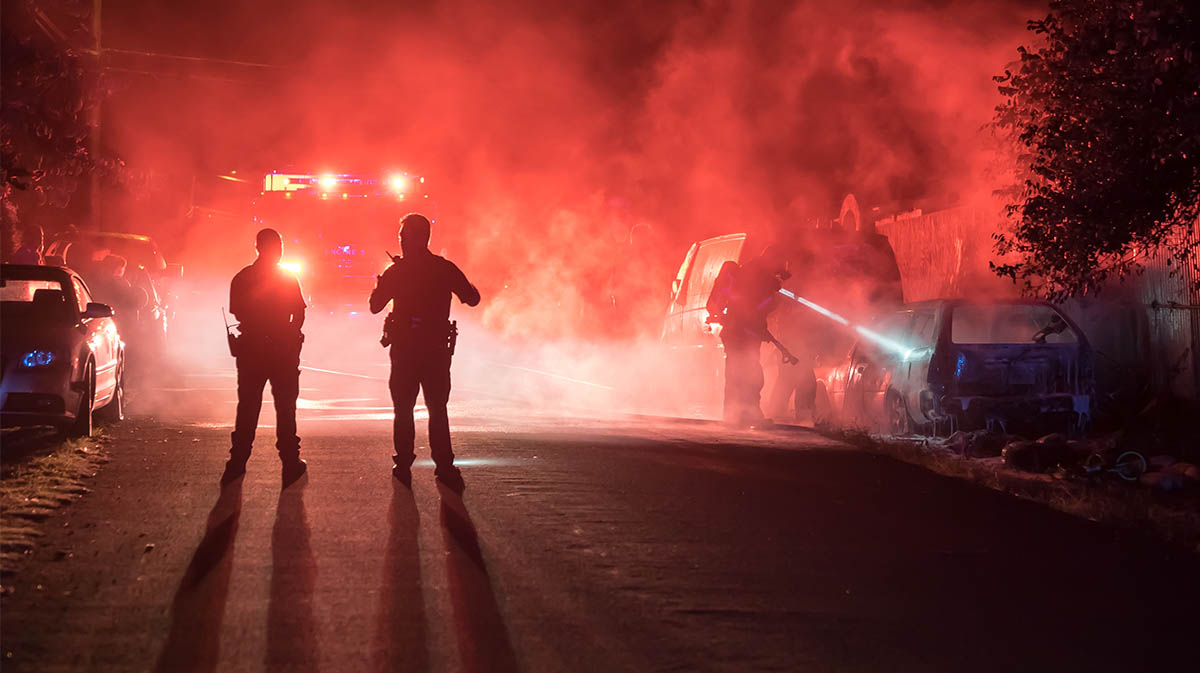Active Shooter Training Programs: Guaranteeing Workplace Safety
Active Shooter Training Programs: Guaranteeing Workplace Safety
Blog Article
Effective Approaches and Methods in Energetic Shooter Training for Improved Safety And Security
In today's ever-evolving security landscape, the value of readiness and efficient feedback techniques despite active shooter occurrences can not be overemphasized. Organizations, organizations, and people must furnish themselves with the essential tools and understanding to minimize risks and secure lives in such essential situations. From detailed threat assessments and dilemma interaction intends to hands-on scenario drills and medical training, a multi-faceted technique is crucial. Just having these parts in area is not enough; the essential lies in their seamless combination and real-world application. By diving right into the details of each of these elements and exploring how they can operate in harmony, a much more reliable and durable energetic shooter training program can be established to boost protection actions.
Danger Evaluation and Risk Analysis
Reliable threat evaluation and complete danger analysis are foundational components in improving safety and security steps during energetic shooter training programs. By carrying out a thorough risk assessment, companies can determine potential susceptabilities and establish targeted strategies to alleviate risks linked with energetic shooter occurrences. This process includes examining factors such as center design, gain access to points, security systems, and emergency procedures to create a detailed understanding of the specific dangers faced by the company.
Risk evaluation plays a vital role in energetic shooter training programs by identifying possible adversaries, their capacities, and their objectives. This details is used to create realistic training situations that simulate the strategies and actions of potential attackers, enabling individuals to practice suitable feedbacks in a regulated atmosphere. By including threat analysis right into training workouts, organizations can better prepare their workers to identify and respond efficiently to energetic shooter scenarios.
Crisis Communication and Action Strategies
In light of the extensive danger evaluation and thorough threat analysis carried out throughout active shooter training programs, a vital facet that companies must deal with is the advancement of dilemma interaction and feedback strategies. These strategies are necessary for making sure a worked with and reliable feedback to an energetic shooter scenario, decreasing potential harm to people, and boosting total protection actions.
Effective crisis interaction strategies ought to describe clear protocols for sharing info to all stakeholders, including employees, site visitors, police, and the media. Timely and accurate interaction is critical in handling the situation, giving directions on exactly how to remain risk-free, and avoiding panic or false information from dispersing.
Reaction strategies, on the other hand, information the certain actions that individuals need to absorb the event of an energetic shooter incident. This consists of procedures for lockdowns, discharges, safeguarding in place, and engaging with law enforcement upon their arrival. Normal training, drills, and updates to these plans are essential to guarantee their effectiveness and the safety and security of everyone included. Organizations must focus on the growth and regular testimonial of these crucial strategies to enhance their general protection position despite potential risks.
Energetic Shooter Circumstance Drills
Conducting routine energetic shooter circumstance drills is vital for preparing individuals and organizations to react effectively in high-stress circumstances. These drills replicate real-life energetic shooter scenarios, allowing participants to practice their reactions and examine the performance of their training and emergency situation methods (active shooter training). By performing these drills, people can familiarize themselves with the sound of simulated gunfire, practice lockdown procedures, evacuation routes, and communication techniques
Active shooter situation drills likewise assist in determining prospective weaknesses in safety and security steps and reaction plans. Through these simulations, organizations can assess the performance of their protection methods, interaction systems, and control amongst personnel. Conducting these drills routinely can help in refining existing treatments, applying renovations, and making sure that all individuals are prepared to act swiftly and emphatically in the event of an active shooter incident.

Emergency Medical Training and Emergency Treatment
Enhancing preparedness for emergency circumstances, including active shooter occurrences, requires detailed training in emergency situation clinical treatments and initial help. In the occasion of an energetic shooter circumstance, individuals learnt emergency medical procedures can provide crucial aid to those wounded till specialist clinical assistance shows up. Aid training equips people with the expertise and skills to administer immediate treatment, support clients, and potentially conserve lives.
Secret components of emergency clinical training include learning discover here just how to manage bleeding, use tourniquets, do CPR, and deal with different wounds. Individuals likewise learn just how to prioritize treatment based on the intensity of injuries and the readily available sources. Training in initial aid assists individuals continue to be calm and concentrated during disorderly situations, allowing them to make quick and educated choices under pressure.

Emotional Assistance and Injury Treatment
Supplying mental support and trauma care is important in reducing the emotional impact of emergency situation scenarios, such as energetic shooter occurrences. When individuals experience such terrible events, they may experience a series of mental distress, including anxiety, clinical depression, and post-traumatic stress and anxiety problem (PTSD) As a result, it is vital to have trained specialists offered to provide immediate assistance and interventions to help people manage the aftermath of such situations.
Psychological emergency treatment is a vital element of reacting to active shooter events. This method entails supplying practical aid, emotional assistance, and dealing methods to those affected by the injury. By dealing with the emotional needs of people promptly, the probability of long-term unfavorable end results can be decreased, and people can begin the process of recovery and recovery.
Along with prompt mental assistance, recurring trauma treatment is essential for those impacted by energetic shooter cases. This may include accessibility to counseling services, assistance teams, and other resources to assist people navigate important site the complex feelings and obstacles that can arise complying with such stressful occasions. By prioritizing mental assistance and injury treatment in active shooter training programs, organizations can better prepare individuals to handle the psychological aftermath of such emergencies.
Final Thought
In final thought, reliable approaches and techniques in active shooter training play an important duty in boosting security measures. By conducting risk assessments, establishing dilemma interaction plans, practicing active shooter situation drills, supplying emergency situation clinical training, and using mental assistance, companies can better prepare for and react to such critical incidents. It is vital for all stakeholders to be positive in executing these steps to make certain the safety and security and wellness of individuals in a potential active shooter scenario.
By diving into the complexities of each of these elements and checking out exactly how they can function in harmony, a more reliable and durable active shooter training program can be developed to boost protection procedures.
Efficient risk assessment and thorough hazard evaluation are foundational components in boosting safety and security measures throughout active shooter training programs. These drills simulate real-life energetic shooter circumstances, allowing individuals to practice their responses and examine the effectiveness of their training and emergency situation procedures. By prioritizing emotional support and injury care in energetic shooter training programs, organizations can much better prepare individuals to deal with the emotional aftermath of such emergency situations.
In conclusion, efficient strategies and strategies in active shooter training play a critical function in boosting safety and security actions.
Report this page